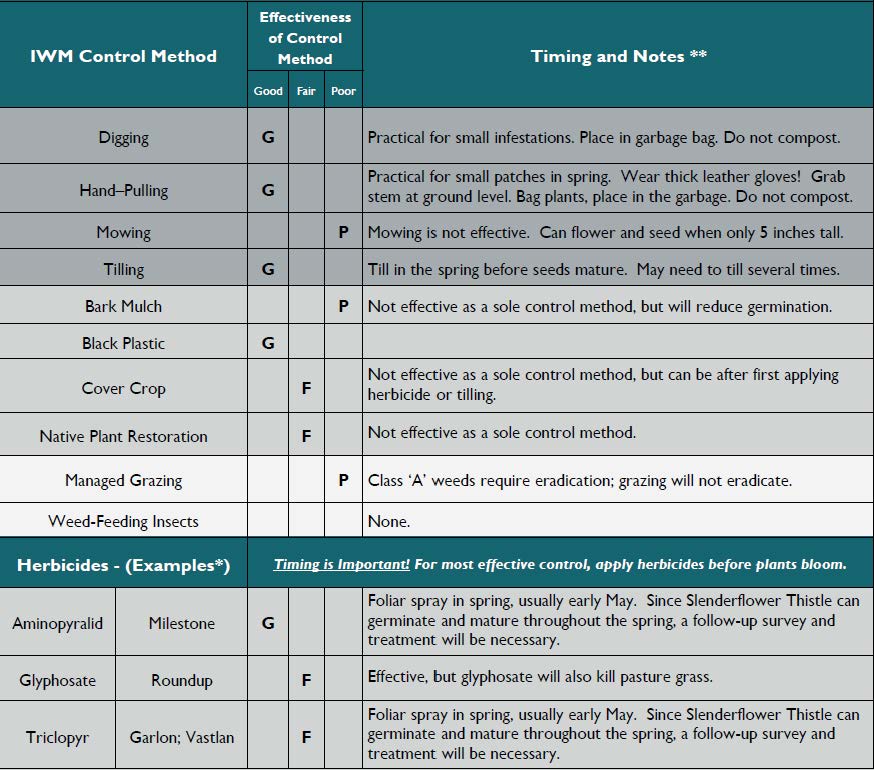
Carduss tenuiflorus
Slenderflower thistle brochure (PDF)
Why is slenderflower thistle a problem?
Slenderflower thistle invades rangeland and pastures, reducing productivity by displacing desired grasses and interfering with available grazing areas.
Reproduction by seed creates dense stands resulting in deterred grazing and harm to livestock.
Recommendations for controlling slenderflower thistle
Recognizing slenderflower thistle
Slenderflower thistle is a winter broadleaf annual or sometimes a biennial. Plants grow one to four feet tall and stems have spiny wings.
Leaves are deeply cut into two to five pairs of lobes per leaf with the undersurface of leaves slightly woolly in appearance due to cobwebby hairs.
Flowers are purple to pinkish in cylindrical heads in terminal clusters of five to 20. Flowers are up to 2 centimeters in length, and bracts surrounding the flowerheads are hairy.
Slenderflower thistle is most abundant in dry open areas such as rangelands and pastures forming dense stands and reproducing by seed. It germinates in the fall, overwinters as a rosette and produces flowering stalks in late spring.
